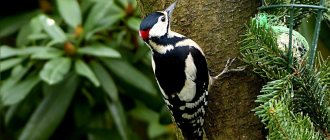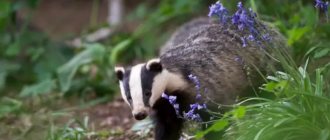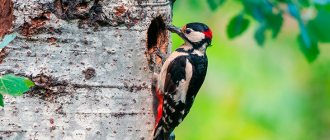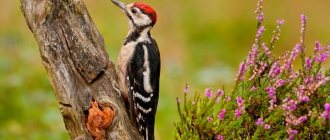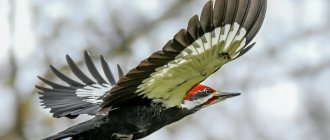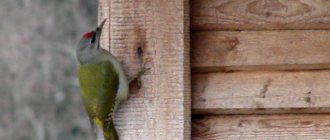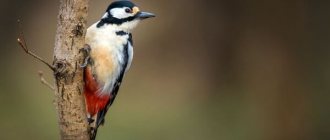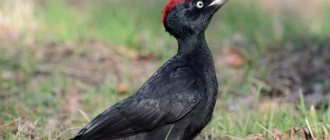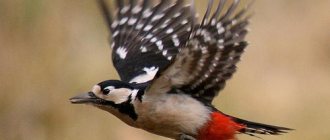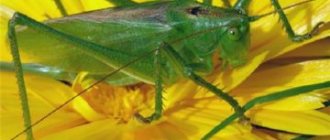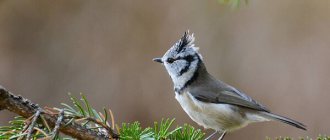- Wild animals
- >>
- Birds
The Green Woodpecker is the largest of the three woodpeckers that breed in the UK, the other two being the Great and Lesser woodpeckers. It has a large body, a strong and short tail. It is green on the top with a pale belly, bright yellow rump, and red on the crown. Green woodpeckers are distinguished by their undulating flight and loud laughter.
Origin of the species and description
Photo: Green Woodpecker
Green woodpeckers are part of the "woodpecker" family - Picidae, which consists of woodpeckers, of which there are only three in the UK (great spotted woodpeckers, less spotted woodpeckers, green woodpeckers).
Video: Green Woodpecker
Along with larger and less conspicuous woodpeckers and kelp woodpeckers, the green woodpecker managed to cross the land bridge between Britain and continental Europe after the last ice age, before the waters closed forever to form the English Channel. Six of Europe's ten woodpecker species failed to pass and have never been seen here.
Interesting fact: According to various translations, from Greek and Latin, the meaning of the word "green woodpecker" is very simple: pikos means "woodpecker" and viridis means "green": a rather uninteresting direct translation, but nonetheless to the point.
It has green upperparts, paler yellowish lowerparts, a red crown and whisker stripe, males have a red belly and females are all black. The length of the green woodpecker is from 30 to 36 cm with a wingspan of 45 to 51 cm. The flight is undulating, with 3-4 beats of the wings, accompanied by a short glide when the wings are held by the body.
It is a shy bird that usually attracts attention with its loud calls. The woodpecker makes a nest in a tree; Since the beak is relatively weak, it is used for pecking only in soft wood. The animal lays four to six eggs, which hatch in 19-20 days.
How to recognize a greenfinch bird
This is a small bird. Her body size is about 17 centimeters in length. The bird weighs half as much as a chicken egg: about 20 - 25 grams. When the greenfinch spreads its wings, their span is about 30 centimeters.
The bird was nicknamed the greenfinch because its plumage is yellowish-olive with a green tint. The feathers on the back are slightly brown. The bird's beak is gray, and the mandible has a slightly reddish tint.
Sexual dimorphism (the difference between females and males) is manifested in the color of the feathers: females are much paler than males of this species.
The bird got its name due to the color of its plumage.
Appearance and features
Photo: Green Woodpecker Author: Svetlana Medvedeva (@msvetlana012018)
The green woodpecker is much larger than its cousins. It is the largest woodpecker in the UK with a dense and short tail. In terms of color, it is primarily green, as reflected in its name, and has a distinctive red crown. The tail, unlike other woodpeckers, is somewhat short and has a thin yellow-black stripe along the edge.
Fun fact: Male and female green woodpeckers look the same, but adult males have more red in their whisker stripe, while adult females do not.
All ages and sexes have bright green plumage with yellow rumps and red caps, but juvenile green woodpeckers have gray plumage.
Appearance of a green woodpecker:
- head: dominant red crown, with black coloring around the eyes and pale green cheeks.
- strong, long black beak.
- the color of the antennae of this bird distinguishes the sexes, since in males they are red, and in females they are black;
- wings: green;
- body: the upper part of the body has green plumage, the lower part is gray, and the tail is yellow.
As with other woodpeckers, green woodpeckers use their stiff tail feathers as support when they cling to a tree, and their toes are specially positioned so that two toes point forward and two toes point backward.
Voice
The green woodpecker is easier to hear than to see. His voice is very easy to recognize; whoever has heard it once will never confuse it with any other. Birds of both sexes call throughout the year, and their repertoire does not differ from each other. However, it is most often heard during mating season.
Mating calls of the green woodpecker.
The voice is sharper than that of the gray woodpecker; unlike the latter, it is often characterized as “laughter” or “screaming.” Makes a very loud, uncompromising "glue-glue-glue" or "glitch-glitch-glitch" sound that can contain anywhere from one to twenty syllables. Often the emphasis is on the second syllable, the tempo of singing can increase or slow down, and also fade away at the end. Unlike the gray woodpecker, there is no change in voice pitch. To make such sounds, the green woodpecker knocks on a dry branch.
Where does the green woodpecker live?
Photo: Green Woodpecker Author: Svetlana Medvedeva (@msvetlana012018)
Although they are largely sedentary, green woodpeckers have gradually expanded their range in Britain and were first bred in Scotland in 1951. However they are still absent from Ireland and the Isle of Man, the Isle of Wight only being colonized in 1910 despite being more common in the south, suggesting a reluctance to cross the water.
They live in temperate, and also slightly in milder boreal and Mediterranean zones of the western Palaearctic in oceanic and continental climates. Quite common in open woodland, heathland, gardens and farmland with hedgerows and scattered large trees.
Unlike most woodpeckers, it feeds mainly on the ground, including garden lawns, where it punctures anthills and moves with a strange, shuffling gait. Fairly large in size and mostly green in plumage, characteristic of most areas; Also worth noting is the red crown, pale eyes and black face (males have red whisker markings). Few birds in Iberia have a black face. The yellowish rump appears mainly in slightly wavy flight.
Thus, in Great Britain, green woodpeckers live all year round and can be observed in most parts of it, with the exception of those very northern tips in the Scottish Highlands, the islands and throughout Northern Ireland. The green woodpecker's preferred habitat is open forests, gardens or large parks. They look for a combination of suitable mature trees for nesting and open ground. Open ground covered with short grass and vegetation is best for feeding them.
Now you know where the green woodpecker lives. Let's see what he eats.
Lifestyle and habitat
Habitats of the green woodpecker: Europe, with the exception of the islands of the Mediterranean Sea, Ireland, Northern Scotland, Iceland, Finland, Northern Scandinavia and northern Russia, that is, it can be classified as both birds of Russia and birds of the world. It is also found in our Ozersky district.
With patience, the wary green woodpecker can be seen in our Ozyorsk region.
The green woodpecker differs from its relatives in that it moves more often on the ground than along a tree trunk, almost never “drums” and extremely rarely chisels tree trunks with its beak. The flight of this bird is deep and undulating, with characteristic wing beats immediately on takeoff.
For their residence, green woodpeckers choose broad-leaved forests, where many old trees grow. They can settle along ravines, in oak groves and alder forests, on forest edges, even in city gardens and parks, the main condition is the presence of sunny clearings, open places covered with grass, where you can find numerous earthen anthills, since their inhabitants are the basis of the birds’ diet .
Ants are the main diet of the green woodpecker.
These woodpeckers lead a predominantly sedentary lifestyle, wandering extremely rarely and only over short distances, as they can live in snowy winters. Even in the difficult and hungry winter period, green woodpeckers prefer to move no more than five kilometers away from their roosting site.
What does the green woodpecker eat?
Photo: Green Woodpecker Author: Svetlana Medvedeva (@msvetlana012018)
If you are lucky enough to have Green Woodpeckers visiting your garden, then you have most likely seen them on your lawn. This is because the green woodpecker's diet consists mainly of ants - adults, larvae and eggs.
In winter, when ants become more difficult to find, they will eat the following:
- other invertebrates;
- pine seeds;
- fruits.
Fun Fact: Since the green woodpecker's main prey is ants, it spends a lot of time searching for prey on the ground and can be seen in its distinctive style.
Green woodpeckers voraciously consume ants. In fact, they spend such an incredible amount of time on the ground searching for their favorite food that you'll often find them in parks and garden lawns - short grass provides ideal foraging areas for green woodpeckers. They also love to eat caterpillars and beetles and have a specially adapted long "sticky tongue" that is used to extract bugs from cracks and crevices of old rotting trees.
So while the green woodpecker loves to eat ants, it will also eat other invertebrate bugs commonly found in their habitat or garden, along with pine seeds and some fruits. These other types of food will be a fallback during times when ants are harder to find.
Features of character and lifestyle
Photo: Green Woodpecker
Green woodpeckers live in trees, like most birds. They dig holes in tree trunks found in deciduous forests. Their beaks are weaker than those of other woodpeckers, such as the Great Spotted Woodpecker, so they prefer softer tree trunks when making nests and rarely drum for communication purposes. Green woodpeckers also like to dig their own nests, a process that takes them two to four weeks.
Green Woodpeckers are very loud and have a recognizable loud laugh known as a "jaffle", which is often the only way to know that a Green Woodpecker is nearby as they tend to be quite wary birds. This is by far the most distinctive sound that green woodpeckers make, but you can also hear their song, which is a series of slightly accelerating 'peck' sounds.
Fun fact: Rainbird is another name for the green woodpecker, as the birds are believed to sing more in anticipation of rain.
Of Great Britain's three woodpeckers, the green woodpecker spends the least amount of time in trees and is often seen feeding on the ground. Here he will probably dig for ants, his favorite food. It eats both adults and their eggs, catching them with its exceptionally long and sticky tongue.
Birds of the continents Green woodpecker. Video (00:01:53)
Among our birds there are few species with such beautiful colors as this woodpecker. The old bird has a green upper body, a yellowish lower back, and a pale greenish belly with dark transverse stripes. The top of the head is red. In addition, the male has a red stripe along the lower part of the cheeks. In the female this stripe is black. The eyes are yellowish-white, the beak is blackish with a yellow base of the lower jaw. In size, the green woodpecker is second only to the yellow woodpecker (its length is about 31 centimeters). He is as noisy as she, but noticeably differs in that he feeds more readily on the ground than in trees.
Social structure and reproduction
Photo: Green woodpecker bird
Although green woodpeckers can mate once for their entire lives, they are antisocial outside the breeding season and spend much of the year living alone. The two halves of a couple may be close to each other during the winter, but they will not reconnect until March. This is achieved through the use of loud calls and a courtship period.
Green woodpeckers prefer to nest in holes in old deciduous trees (oak, beech and willow) that are close to feeding grounds with such delights as ants and caterpillars. Green woodpeckers typically chisel and remove entrails within a 60mm x 75mm circle of rotting trunk, the interior of which has been dug to a depth of 400mm. Interestingly, the difficult task of excavation is carried out only by a man for a long period of 15-30 days. This time-consuming method is often worth the effort, as a hole created by a green woodpecker's hands can be usable for up to 10 years.
This bird is not very sociable and lives alone except during the breeding season. During courtship, the male chases the female around the tree trunk. Taking a defensive position, the male shakes his head from side to side, straightening his crest and spreading his wings and tail. Unlike many other woodpeckers, it knocks only in the spring.
From a breeding point of view, green woodpeckers begin the breeding process in late April and produce an average of 2 clutches per season. Each of these clutches produces 4 to 9 eggs, and the incubation period, which lasts about 19 days, then culminates in fledging in about 25 days. Green woodpeckers have only one brood of five to seven eggs and usually lay them in May. They usually nest in living trees and often use the same tree every year, if not the same hole.
At fledging, each parent usually takes half of the young - a fairly common occurrence in birds - and shows them where to feed. It is at this time of year that they can be taken to garden lawns for feeding, providing an excellent opportunity to brush up on your identification skills.
Natural enemies of green woodpeckers
Photo: What a green woodpecker looks like
Green woodpeckers' natural enemies are nest eaters such as snakes, grackles or other birds, and they eat green woodpecker eggs and young. In adulthood, woodpeckers are prey for wild cats, saffron caps, foxes, hawks and, of course, coyotes. If green woodpeckers had no predators, we would be stunned by their numbers. They are in danger from the very beginning of their existence.
The green woodpecker is common in its population. Deforestation and habitat changes threaten its existence, however, the species is not globally threatened at this time. Green woodpeckers have increased most rapidly in numbers in arable habitats, but are also increasing in rural settlements and mixed agricultural areas. In their preferred habitat, deciduous forests, growth rates have slowed and numbers have reached saturation point, causing them to migrate to less preferred habitat.
The population of green woodpeckers in the UK has increased steadily since the 1960s, when they expanded their range into central and eastern Scotland. They have also recently expanded their population in England, but not in Wales. The reason for this increase is climate change, as these woodpeckers are exposed to cold weather. Thus, the main threats to green woodpeckers are loss of forest habitat and changes in agriculture: grasslands are plowed annually, and ant colonies are either destroyed or not established.
Interesting facts about the bird
There are several interesting facts about the gray woodpecker. The most common of them:
- The ancient Romans considered it a sacred bird, so they did not use it for food.
- Among two hundred species, there are unique specimens that live in deserts. Instead of tree trunks, they use large cacti as homes.
- There are also earthen representatives of the species in the world. They make holes in the ground.
- Even more strange are the red-headed woodpeckers, which live next to poisonous insects - fire ants. Moreover, the females lay eggs in the anthill and calmly hatch them. At the same time, the ants do not try to drive away the bird, which feeds on the inhabitants of their nest.
Gray woodpeckers are not the most positive representatives of the fauna. They often destroy the nests of other birds. However, it is interesting not only for representatives of science to observe it.
